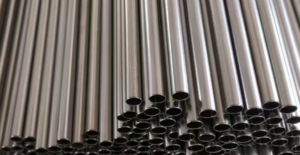Inconel 601 alloy, as a nickel–chromium alloy, plays a pivotal role in industries such as aviation, aerospace, chemicals, and petroleum due to its exceptional heat resistance and corrosion resistance. These outstanding properties are intricately linked to the alloy’s microscopic structural characteristics, enabling it to withstand oxidation and various forms of corrosion in high-temperature and harsh corrosive environments, thus making it highly sought-after in industrial applications. This article provides a detailed microstructural analysis of Inconel 601 alloy.

Microstructural Analysis of Inconel 601 Alloy:
Firstly, regarding the grain structure, Inconel 601 alloy exhibits a face-centered cubic lattice structure, where grain size and grain boundary clarity undergo changes at different temperatures. As the temperature increases, the grain size gradually enlarges, and grain boundary clarity decreases. The growth rate and morphology of grains significantly impact the alloy’s mechanical properties, contributing to Inconel 601’s superior oxidation resistance at elevated temperatures.
Secondly, in terms of phase structure, Inconel 601 alloy typically has a single-phase austenitic matrix, which endows it with excellent mechanical properties and thermal stability. At high temperatures, the alloy may form various phase structures, such as carbide and oxide phases. These phase transformations are crucial for enhancing the alloy’s strength, hardness, and corrosion resistance. Moreover, the addition of elements like nickel and chromium to Inconel 601 significantly alters its phase structure, further hindering oxidation and corrosion.
Furthermore, precipitates, primarily carbides and nitrides, play a pivotal role in Inconel 601 alloy. These precipitates affect the alloy’s microstructure and mechanical properties, thereby influencing its mechanical performance, oxidation resistance, and corrosion resistance. Notably, the type and quantity of precipitates can be controlled and optimized through appropriate heat treatment processes, ensuring Inconel 601’s reliability and durability under extreme operating conditions.
It is worth mentioning that heat treatment is a crucial means of influencing the microstructure of Inconel 601 alloy. By adjusting parameters such as heat treatment temperature and time during processing, significant effects can be observed on the alloy’s grain structure, phase structure, and precipitates. Typically, after proper heat treatment, Inconel 601 alloy exhibits more moderate grain sizes, more stable phase structures, and more uniform precipitate distributions, leading to a notable improvement in alloy performance.
Conclusion
In conclusion, the microstructure of Inconel 601 alloy plays a vital role in enhancing its properties. Especially after heat treatment, the alloy’s microstructure can be further refined, significantly boosting its performance in various applications. This, in turn, equips Inconel 601 alloy with superior mechanical and physical properties, fulfilling the diverse demands of industrial production.
Why Choose Huaxiao Alloy?
Thank you for reading our article and we hope this microstructural analysis of Inconel 601 alloy can be helpful to you. If you are looking for suppliers and manufacturers of Inconel 601 alloy, we would advise you to visit Huaxiao Alloy.
As a leading supplier of Inconel alloy from Shanghai China, Huaxiao Alloy offers customers high-quality Inconel 600, Inconel 601, Inconel 625, and Inconel 718 at competitive prices.



